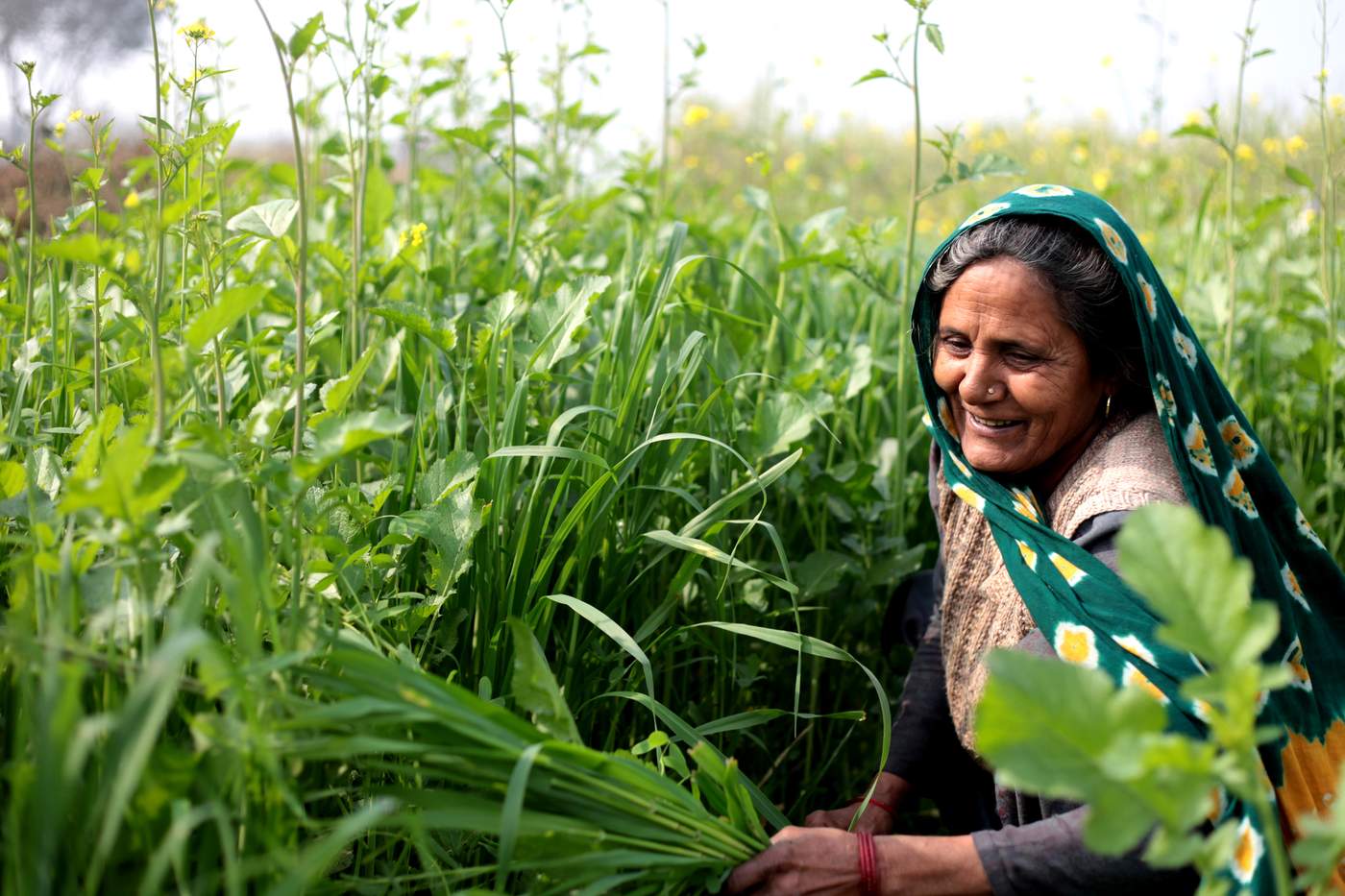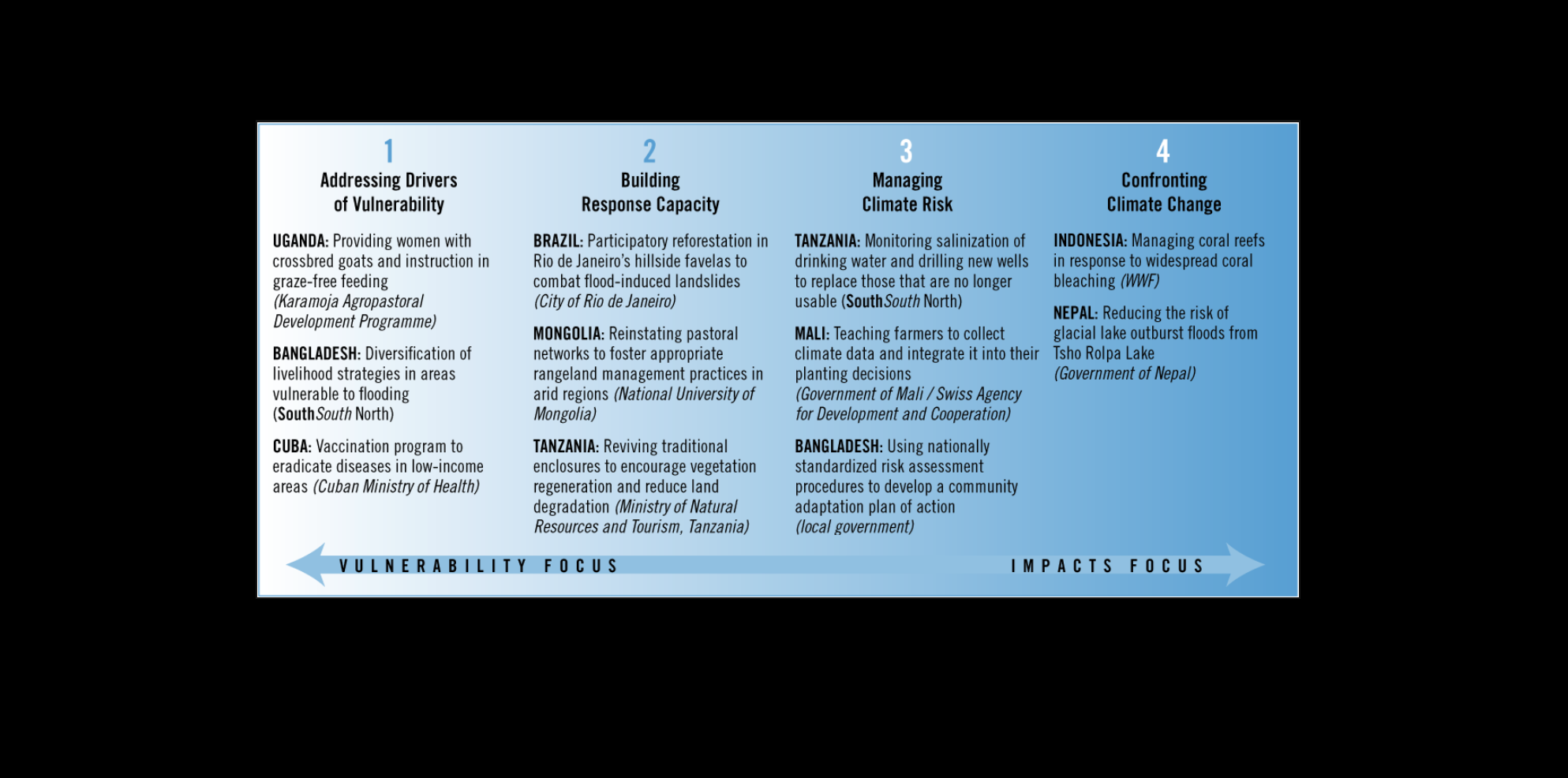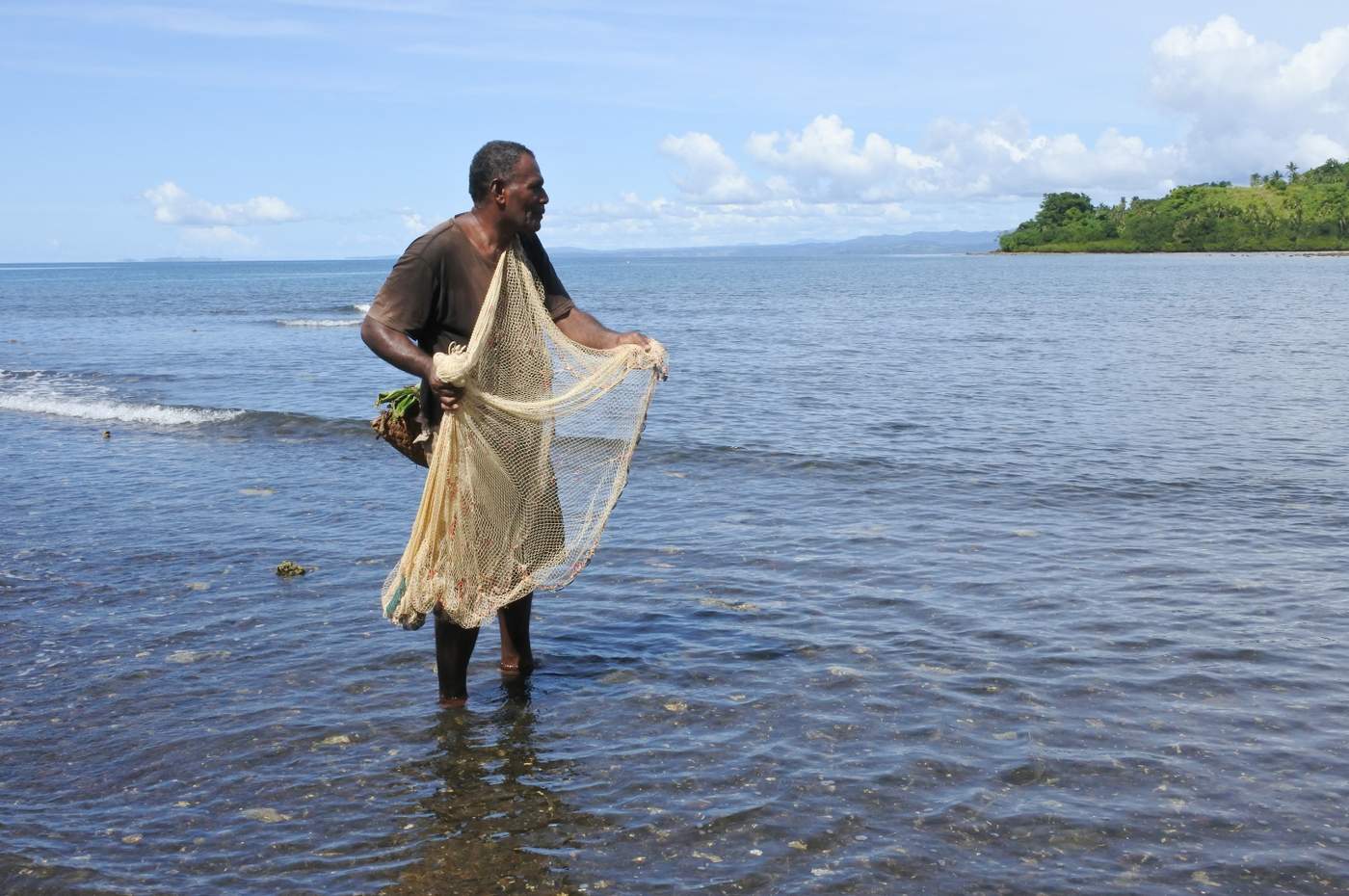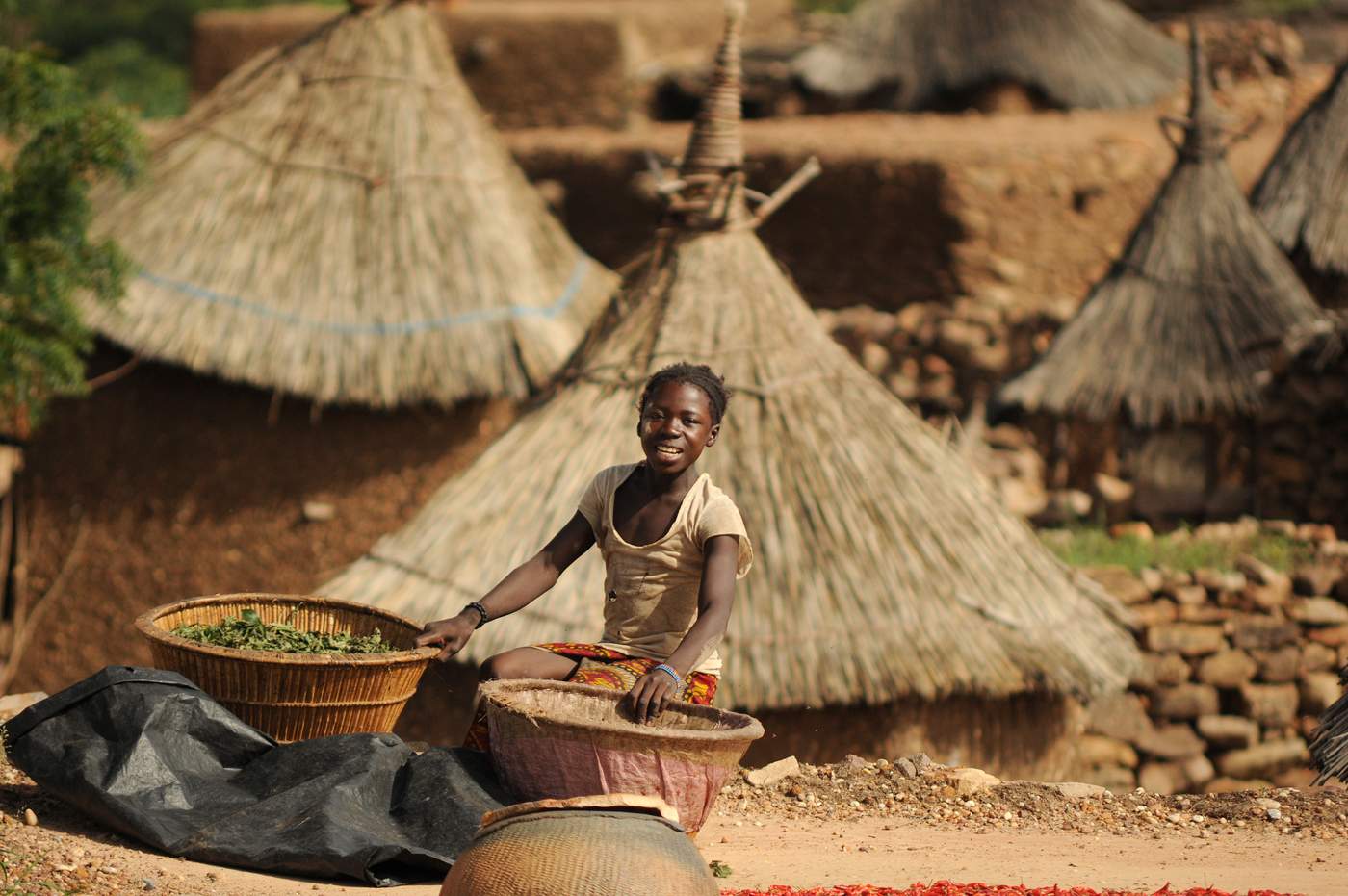"Is it adaptation or is it development?"
The question has bedeviled the adaptation policy community for well over a decade.
Despite a more sophisticated understanding of adaptation, greater political recognition of its importance in responding to the climate crisis and, crucially, more resources than ever for its implementation, funders and practitioners continue to ask fundamental questions about what constitutes adaptation and how to distinguish it from other non-adaptive activities.
Indeed, this is the question that spurred us to develop “the adaptation continuum” back in 2007, when we provided a framework that proposed a range of what adaptation can look like. On the left hand side of the continuum lay “business-as-usual” development activities focused on addressing the roots of vulnerability. On the right were discernably “business unusual” activities, which are explicitly about addressing the impacts of climate change.
The aim of the continuum was to portray the different—and sometimes complex—facets of adaptation so that people weren’t always looking for the new and additional. We felt that a continuum was a useful way to convey that, in between adaptation’s two extremes, there lies a broad range of efforts that differ in the degree to which they emphasize addressing vulnerability versus addressing climate change impacts. We tried to capture the richness of adaptation, highlighting its fundamental links to poverty reduction, institutional strengthening, risk management and, in some contexts, transformation.
Our point was that trying to draw sharp distinctions between “adaptation” and “development” was not necessarily helpful or reflective of what was a reality on the ground. Investments in what seemed like “traditional development” could be just as important—in some cases, more important—than investments in activities that appeared to focus explicitly on addressing climate impacts. Strict additionality could actually lead to potentially bad investments, as they risked overlooking what was making communities, ecosystems and economies vulnerable to climate change in the first place. What’s more, it was the evidence, assumptions and planning that lay behind the adaptation activity that was important, not necessarily how it appeared in its execution.
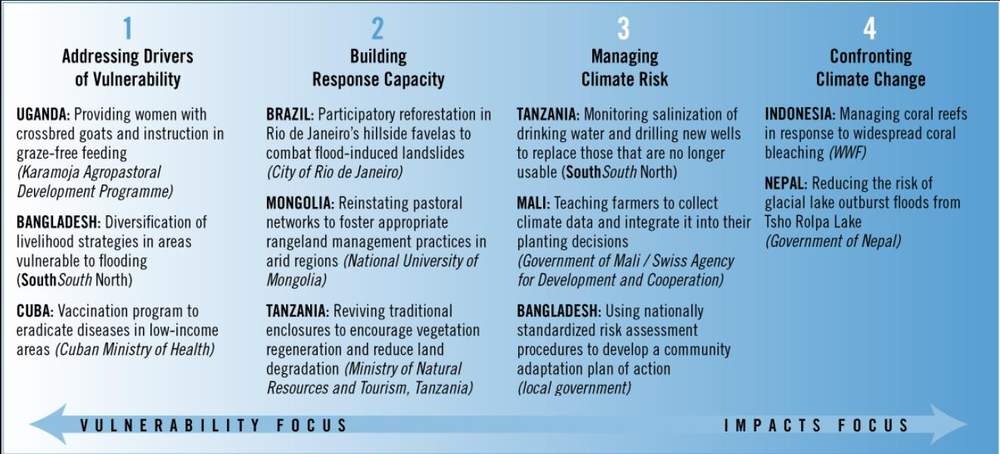
As we observed in 2007:
Rarely do adaptation efforts entail activities not found in the development toolbox. The uniquely adaptive elements of most efforts are those involved in defining problems, selecting strategies, and setting priorities – not in implementing solutions.
This conclusion did not lend itself to easy formulas or generic criteria for discerning differences between adaptation and development. Nevertheless, the continuum and the conclusions therein became useful framing devices that supported many conversations on adaptation and resilience.
Since its publication in 2007, we have seen the continuum used in various ways, from a tool to introduce new audiences to the concepts and practices of adaptation to framing discussions around adaptation finance. It is the latter that, in many ways, keeps the continuum alive.
If we accept the central premise that all activities that fall along the continuum—whether vulnerability- or impact-focused—can count as adaptation, and that it is the relationship of that activity to the climate change context that makes it so, then we have a basis for helping funders understand if and how they are supporting adaptation.
This relationship between the activity and the context—the adaptation logic or justification—must be clearly articulated by those seeking funding and other forms of support. The best investment in adaptation in a particular context may be increasing women’s literacy or raising a causeway by 40 centimeters. It doesn’t matter that the former looks like business-as-usual development or that the latter is clearly about dealing with rising sea levels—it is the rationale for why these will help manage climate risk that matters.
As such, funders should distinguish adaptation from “business-as-usual” development by developing a clear set of criteria for what constitutes an acceptable adaptation reasoning for projects they fund. These criteria could include elements such as: effective use of an appropriate vulnerability/risk assessment; inclusion of key stakeholders in initiative planning; articulation of any assumptions used about the future of the climate; hypotheses about the function of activities in that future; and identification of future milestones or benchmarks that would indicate the validity of the reasoning or be used to adjust it. The use of such a process will enable the adaptation effectiveness of activities across the entire continuum to be evaluated fairly as part of the funding process and will allow “development-focused” activities to be recognized as legitimate adaptation options. Once this happens, the climate community can feel confident that adaptation investments will contribute to the transformations we all wish to see.
Anne Hammill is Director of the Resilience Program at the International Institute for Sustainable Development, which hosts secretariat for the National Adaptation Plan (NAP) Global Network.
Heather McGray is Director of the Climate Justice Resilience Fund, and previously served as the Director of the Climate Resilience Practice at the World Resources Institute.

